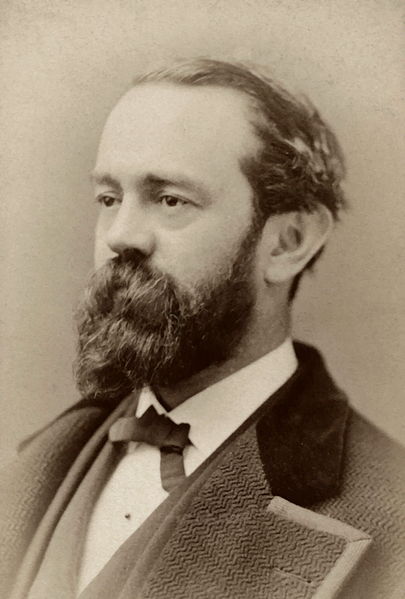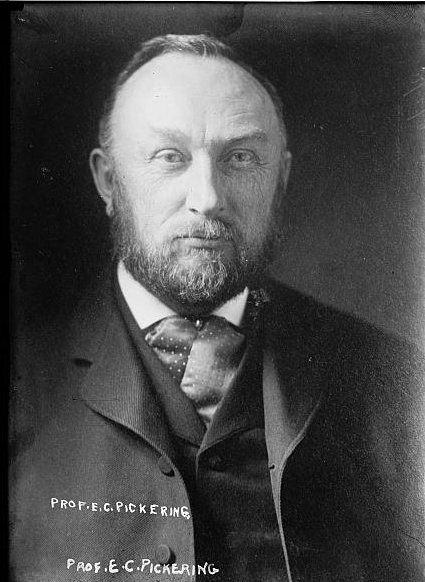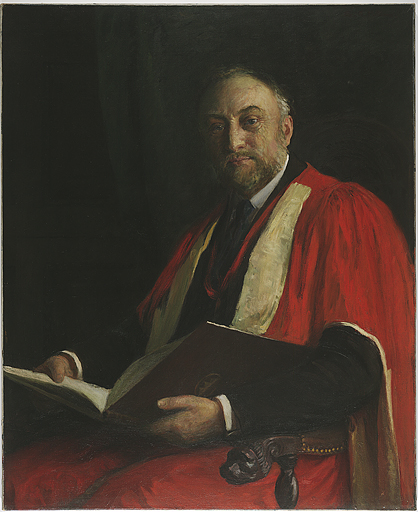<Back to Index>
- Astronomer Henry Draper, 1837
- Astronomer Edward Charles Pickering, 1846
PAGE SPONSOR

Henry Draper (March 7, 1837 – November 20, 1882) was an American doctor and amateur astronomer. He is best known today as a pioneer of astrophotography.
Henry Draper's father, John William Draper, was an accomplished doctor, chemist, botanist, and professor at New York University; he was also the first to photograph the moon through a telescope in the winter of 1839 – 1840. Draper's mother was Antonia Coetana de Paiva Pereira Gardner, daughter of the personal physician to the Emperor of Brazil.
He graduated from New York University School of Medicine, at the age of 20, in 1857. He worked first as a physician at Bellevue Hospital,
and later as both a professor and dean of medicine at New York
University (NYU). In 1867 he married Anna Mary Palmer, a wealthy
socialite.
Draper was one of the pioneers of the use of astrophotography. In 1872, he took a stellar spectrum that showed absorption lines, others, such as Joseph Fraunhofer, Lewis Morris Rutherfurd and Angelo Secchi, preceded him in that ambition.
He resigned his chair in the medical department in 1873, to allow for more time for original research.
He directed an expedition to photograph the 1874 transit of Venus, and was the first to photograph the Orion Nebula, on September 30, 1880. Using his 11 inch Clark Brothers photographic refractor he took a 50 minute exposure. He photographed the spectrum of Jupiter in 1880.
Draper's observatory, where he took his much admired photographs of the moon, was located in Hastings - on - Hudson, New York, and today the building functions as the Hastings - on - Hudson Historical Society.
Draper received numerous awards, including honorary LL.D. law degrees from NYU and the University of Wisconsin – Madison in 1882, a Congressional medal for directing the U.S. expedition to photograph the 1874 transit of Venus, and election to both the National Academy of Sciences and the Astronomische Gesellschaft. In addition, he held memberships in the American Photographic Society, the American Philosophical Society, the American Academy of Arts and Sciences and the American Association for the Advancement of Science.
After his untimely early death from double pleurisy, his widow funded
the Henry Draper Medal for outstanding contributions to astrophysics
and a telescope, which was used to prepare the Henry Draper Catalog of stellar spectra. This historical Henry Draper's telescope is now at the Toruń Centre for Astronomy (Nicolaus Copernicus University) at Piwnice in Poland. The small crater Draper on the Moon is named in his honor.


Edward Charles Pickering (July 19, 1846 – February 3, 1919) was an American astronomer and physicist, brother of William Henry Pickering.
Along with Carl Vogel, Pickering discovered the first spectroscopic binary stars. He wrote Elements of Physical Manipulations (2 vol., 1873 – 76).
Pickering attended Boston Latin School, and received his B.S. from Harvard in 1865. Soon after graduating from Harvard, Pickering taught physics at the Massachusetts Institute of Technology. Later, he served as director of Harvard College Observatory from 1877 to his death in 1919, where he made great leaps forward in the gathering of stellar spectra through the use of photography.
At Harvard, he recruited many women to work for him, including Annie Jump Cannon, Henrietta Swan Leavitt, and Antonia Maury. These women, who came to be known as "Pickering's Harem" by the scientific community, made several important discoveries at HCO. Leavitt's discovery of the period - luminosity relationship for Cepheids, published by Pickering, would prove the foundation for the modern understanding of cosmological distances.
In 1876 he co-founded the Appalachian Mountain Club.
In 1882, Pickering developed a method to photograph the spectra of multiple stars simultaneously by putting a large prism in front of the photographic plate.
He also, along with Williamina Fleming designed a stellar classification system based on an alphabetic system for spectral classes that was first known as the Harvard Stellar Classification and became the basis for the Henry Draper Catalog.
Pickering is credited for making the Harvard College Observatory known and respected around the world, and it continues today to be a well respected observatory and program.